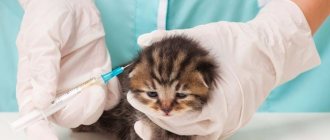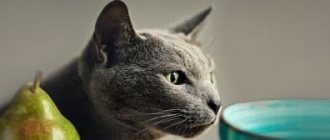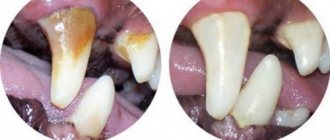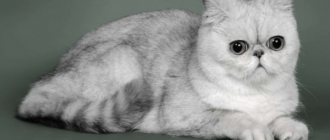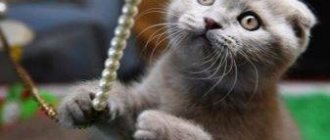Acquiring any animal is not only a pleasure from communication, but also a great responsibility. A small kitten requires the greatest possible attention.
In fact, you must replace the baby’s mother and fellow tribesmen, teaching him not only the rules of behavior in your apartment, but also saving his life and health. It depends on the owner what the cat will be like in adulthood: timid, fearful, arrogant, loyal, well-mannered.
And most importantly - healthy or living with a bunch of chronic diseases that begin in infancy.
Rules
You should not indulge all the whims of your pet, so as not to raise a naughty cat or an uncontrollable cat.
Any home should have rules ranging from feeding to personal space. You should not allow your pet to play aggressively, scratch, or bite its owners. You cannot ignore an animal, because on its own it will not become smart and well-mannered. For six months after the kitten is brought home, it is important to create a calm environment for it so that it can relax and feel safe. Stressful situations in the form of:
- noisy gatherings in the company of friends;
- loud music, especially metal or rock;
- walking around the house on a leash;
- screaming, sudden movements, aggression in the tone of voice;
- staring, touching the base of the tail and belly;
- punishments that offend the animal.
You should take note of 10 basic rules.
Feeding time is sacred: it is necessary to maintain certain hours and frequency of feeding. You should never scare a kitten, or even an adult cat, while sleeping. You should not engage in aggressive games with a kitten, deliberately anger him or forcibly hold him by the tail or paws. You can’t shout at your pet, because he understands the owner’s intonation very well. From day one, it is important to give your kitten his own space. He should have his own bed and toys
He should not sleep in his owners' bed. Every day you need to talk to your pet, stroke it, caress it. However, you should not approach your baby with your love if he is busy with something. You should not yell at your baby while bathing, even if he is very scared and scratches. You cannot deliberately frighten him with the loud noise of the vacuum cleaner turned on. You cannot beat an animal to force it to stand or sit as you wish. It is important to provide the cat with access to his tray, bed and bowl. In addition to food, your pet should always have a bowl of water; he should not look for water himself in the sink, toilet or sink.
It is important in the first month after the kitten adapts to new conditions to begin hygiene of the ears, fur and eyes. This should become a habit, just like visiting the veterinarian for preventive examinations.
Diet for a pregnant Scottish cat
Feeding a pregnant cat requires special attention to an enhanced diet and more frequent feeding. Not only the female is provided with food, but also the emerging babies in her womb.
Feed, both industrial and natural in composition, should contain not only healthy products: meat, fish, vegetables, cereals, fermented milk, but also a complex of vitamins, minerals, protein, and microelements. For the formation of embryos, the mother needs taurine, fatty amino acids, calcium phosphorus and other elements. Ready-made food for Scottish cats should be holistic or super premium, which has a specialization for pregnant cats.
What to feed a pregnant Scottish Fold and Straight-eared cat is determined by the period of its condition. It is conditionally divided into 3 stages:
The first three months (trimester) of pregnancy are not externally detectable, but the Scottish cat's appetite increases. The diet remains the same, the volume of food increases by 30 grams
It is important not to overfeed a pregnant cat. The frequency of meals is gradually increased to 5 times a day in small portions.
- During the second trimester, embryos actively grow, the volume of food gradually increases to 2 times
- During the third trimester, your cat's appetite may decrease significantly. The embryos have already gained normal weight and body shape; they do not require increased nutrition. During this period, there is no need to force feed the Scottish cat; she regulates her own needs and instinctively prepares for childbirth.
Feeding after childbirth
How to feed a Scottish Fold cat after giving birth depends on her condition and the number of kittens in the litter. The animal becomes weak in the process of bearing and giving birth to babies; it needs increased high-calorie nutrition to restore and produce milk. But for the first few hours after lambing, the cat refuses to eat, which is natural for her condition. You need to monitor your pet’s well-being and offer to drink water or heated milk diluted with kefir.
The amount of food depends on the number of kittens born, the age of the cat itself and the type of food it previously received.
When feeding industrial products, the manufacturer remains the same, but premium food is selected, specially designed for the postpartum period of cats. They are supplemented with nutritional supplements that stimulate lactation to ensure adequate nutrition for babies. For Scottish fold and straight-eared cats, Royal Canin products are suitable, dry food with a high vitamin and protein content. The first days after birth, dry food is soaked in low-fat broth or milk.
When feeding a Scottish cat with natural products before pregnancy, the diet is not changed, but foods that increase lactation, such as milk, and more often kefir and cottage cheese, are added. During the first few days, the meat is ground into a blender and diluted with broth. The menu must include vegetables, fish, and herbs.
History of the origin of the Scottish Straight breed
The ancestors of the Scottish Fold, like the Scottish Fold, were ordinary British cats without a pedigree. In the 60s 20th century One Briton found an unusual cat with her ears pressed to her head. He really liked the cat and took her to his home.
Scottish straight-eared cat without creases on the ears
A few years later, the found beauty gave birth to kittens, which also had beautiful folded ears. Then the farmer and his wife decided to further develop the cat breed. After a short time, felinologists discovered that pure crossing of two Scottish Folds leads to health problems in the offspring.
For your information! Zoologists found a solution to this problem by crossing two related species: the Scottish straight-eared cat and the fold-eared cat. In fact, without the Scottish Straight, the Scottish Fold breed would disappear.
Upbringing
A young cat is not only looked after, but also raised. If you don’t teach her to use the toilet and scratching post, then later she will mess everything up and destroy all the furniture in the house.
Toilet
A lot depends on what litter you choose for your cat's litter box. To quickly get used to it, do not pour sand into the tray. Use natural wood filler or compressed into granules. For the first few weeks, do not wash it often and thoroughly so that the pet can easily find it by smell.
scratching post
If you accustom a kitten to a scratching post from the first day in a new house, when it grows up, it won’t scratch the furniture, tear up the clothes, or peel off the wallpaper on the wall.
To do this, show a new object to the animal, tie a toy to it, attracting attention, or spray a catnip-scented scent on the soft upholstery of the scratcher.
Walking the cat
The Scottish Straight cat is a domestic cat and does not require regular outdoor exercise. However, there are representatives who are not at all averse to frolicking outside.
In this case, precautions must be taken. It is necessary to ensure that the pet is not in danger from other animals, and also does not come into contact with sick individuals.
In addition, it is necessary to examine the cat for ticks and fleas, as well as regularly perform preventive procedures against intestinal parasites.
Toilet and tray training
Kittens themselves often understand what the tray is for and quickly begin to use it for its intended purpose. If this does not happen, and your pet begins to do “its business” in the wrong place, you should not scold or hit the kitten. He needs to be seated in the tray before he wants to go to the toilet, and it’s easy to guess this moment: any cat starts digging a “hole”.
Since cats navigate by smell, you don’t need to wash the litter box for the first day; this will help your pet get used to the toilet faster. You can use wood shavings or sand as a filler, but this is troublesome, since such products create a lot of dirt; it is better to use modern ones from a pet store. Many owners successfully use the tray even without filler, which is much more practical and budget-friendly.
Description of the Scottish Straight cat
Scottish cats differ in a number of characteristic features that are unique to this breed. Sometimes animals are often confused with the British species, but during the comparison process the following differences can be identified:
- more rounded head;
- the body has an oblong and elongated shape, which gives the animal elegance;
- body proportions are slightly reduced;
- the average weight of a cat is 3 - 5 kg, boys weigh slightly more than females;
- pets are very flexible and remain hardy and playful at any age.
What to feed a Scottish Fold kitten
Before you find out what to feed your Scottish Fold kitten, you need to decide which feeding method you will choose for your pet:
1. Ready-made food for kittens and cats. This is the most convenient way of feeding and does not require much time and effort. It is believed that good food contains a balance of all the nutrients and vitamins a kitten needs, so the food itself “thinks and does everything for you.” There is a wide variety of food on the modern market, so you can choose a specific brand yourself, especially since there are no restrictions on food specifically for the Scottish fold and Scottish straight breeds.
The main thing you need to adhere to: feed a small Fold or Straight only with specialized food for kittens (food for adult cats is absolutely not suitable) - this is dry food and wet food for kittens (mousses)
And second, no less important, how to properly feed a Scots kitten - choose only premium and super premium food for it. Cheap food can only harm your pet
And, of course, the kitten should drink a lot of water!
2. Natural nutrition for Scottish kittens. This method is the most labor-intensive and, contrary to popular belief, not cheap. In this case, you yourself will have to control the intake of useful substances into the kitten’s body, necessary for growth and development. So, what to feed Scottish kittens:
— Lean beef, raw, previously frozen for at least 48 hours. Freezing meat is necessary to destroy helminths. Kittens up to 3.5-4 months can be given meat in the form of minced meat; it is convenient to freeze meat balls in portions. Older kittens must be given in a small whole piece; he must gnaw the meat on his own, training his jaws; in addition, it is better absorbed this way. It is better to give raw meat every other day;
— Chicken fillet and offal, boiled or frozen. But liver can cause stomach upset, so it is better to give it boiled and no more than once a week;
— Fermented milk products (low-fat cottage cheese, natural yogurt, kefir, sour milk)—no more than once a week. The calcium contained in these products is needed to strengthen bones, but too much of it can lead to raised ears in a lop-eared kitten. And this, of course, is unacceptable;
- Boiled eggs, preferably only yolks, once a week. Quail eggs can be raw, 2-3 times a week;
- Boiled vegetables - carrots, white cabbage, cauliflower, broccoli, alone or combined with boiled chicken;
- Raw vegetables - experiment, the kitten will choose what he likes. As a rule, the kitten’s body itself knows which vitamins it lacks;
- Cereals - oatmeal, buckwheat, rice. Kittens eat them mixed with meat, chicken, etc. If the kitten does not want to eat grains, try grinding them or crushing them in a blender, you can use rice, buckwheat in the form of chopped grains. It should be noted that oatmeal is best used if the kitten is prone to constipation; rice, on the contrary, has a fastening effect. In addition, oatmeal can wash calcium out of the body, so giving it alone is not recommended;
— Fish is considered an undesirable product for folds and straights, but if you want to give it, then only low-fat boiled sea fish without bones - no more than once a week;
- Water!!! The kitten should always have water, it is advisable to change it to fresh water every day;
— Vitamins for kittens.
3. Mixed type of feeding kittens. This method is less common, and many consider it unnecessary and even unacceptable. But this is a controversial issue, and I personally chose, and my cat supported, this particular method. Starting from two months, along with natural products, you can introduce dry food for kittens, as well as mousses mixed with boiled vegetables.
Gradually, after a year, the daily diet was formed as follows: 70% high-quality dry or wet food and 30% natural food - cottage cheese, always homemade yogurt, eggs, frozen, boiled meat, offal, raw cauliflower, boiled vegetables, rarely fish.
A kitten up to 3 months eats 4-5 times a day, the portions are small, try to prevent the baby from overeating. Closer to 8 months, gradually reduce the number of feedings to 2 times a day.
What not to feed lop-eared kittens
- Pork
- Salt. We prepare everything for the kitten without salt
- Milk. It is not digested and can lead to intestinal upset
- Legumes, potatoes – bloating, constipation
- Raw fish are helminths!
- Floury, sweet - disorder, allergy
How to retrain an adult cat?
You won't be able to get good behavior from a cat with bad behavior. The tone of communication with a guilty and disobedient animal can be strict, but not irritated or aggressive.
Let us note several main problems and ways to solve them.
- To prevent the cat from biting during play, the bitten finger can be inserted a little deeper. The animal will remember the discomfort well and will quickly understand that it does not need to be repeated.
- If your cat constantly knocks things over, put coins in these containers. When the container falls, there will be a loud sound, which pets do not like; a couple of times will be enough for the cat not to climb into this place anymore.
- Cats do not break dishes on purpose during wild races. Like a mother cat, you can, but not for long, scold the cat by touching the tip of his nose (this is how a mother cat “scolds” babies).
- You should not scold your cat for a whole week for any offense. He quickly forgets why. You can't start screaming.
- To prevent the cat from jumping where it is not allowed, stick sticky tape on these places for a while. She really doesn’t like it, and besides, she remembers places where it’s not worth conquering the “tops of the house.”
- If your cat steals food, it's your fault. Remove it immediately after the meal, wash the dishes, and put the leftovers in the refrigerator. You need to feed the cat before your meal.
- To prevent your cat from jumping all over your clothes, generously donating them with his fur, use sprays based on herbal ingredients. Cats do not like many smells and do not go where they come from.
- If the animal is partial to indoor plants and knocks them over along with the ground, it is worth diluting black pepper in water and sprinkling it on the plant.
- You can reward your pet for good behavior with treats or praise.
- To prevent a cat from shitting in the house in the wrong places, it should not be tame. In addition, children should not be allowed to offend him or the animal should be tortured.
What should he not do?
- Hang on curtains and clothes. For this, the kitten must be severely punished. When it is very small and weighs nothing, the problem is not big. But when it already weighs about 4-8 kilograms, what will be left of your things?
- Scratch or bite you even in play or out of affection. Cats often try to show their best feelings by biting - for them it is like a kiss for people. But scratching is a manifestation of the kitten’s negative emotions. And such manifestations must be nipped in the bud. When the “fluffy” is small, he does not cause much damage with this behavior. But when you get older, you will be guaranteed injuries and infections!
- Sleep on your head. Although it is believed that cats heal sore spots in humans, you should not allow a kitten to sleep on your head or neck, chest or stomach. It will become larger and heavier, but the habit of sleeping on you will remain at the level of instinct, and it may simply disturb your breathing in your sleep. At best, this will lead to bronchial asthma, at worst, it can be fatal.
- Eat from your plate or next to your table. You can’t teach a kitten to “bite” or eat from your plate - it will grow up to be a terrible mischief and you won’t be able to leave anything on the table. He should only have his own dishes, located away from your table. Will it be pleasant for you when guests are sitting at your table, and your cat (kitty) jumps on the table and tries to eat from all the plates at once? Or rubs against your legs and begs for pieces of tasty food?
- Flower pots and indoor plants are taboo for him! This is the problem of all cat owners - spoiled flowers and soil from flower pots scattered everywhere. There are only two options to avoid all this - place pots with plants in places inaccessible to the kitten (which may not always work). Or teach the mischief-maker that he will be severely punished for such offenses.
To prevent your cute and playful kitten from growing into a terrible house tyrant, you need to raise him from an early age and correctly! Moreover, for different breeds of kittens, these rules of upbringing, although not too different from each other, still have such differences.
Care items
Even before a new tenant arrives in your apartment, you need to prepare the basic items for his care.
You will definitely need:
- food bowl - small, capacious, but with fairly low edges; you can choose a plastic cup, which, as your pet grows, replace with a ceramic one;
- a bowl for water - it should be quite heavy and non-slip, otherwise most of the liquid will constantly end up on the floor;
- tray - with a grid or not, depends on whether you plan to use the filler in the future; for a kitten, the tray is purchased in smaller sizes than for an adult animal;
- a scratching post is a thing that will save your upholstered furniture and carpets; a scratching post in the form of a rug or plank is suitable for a kitten;
- brush for combing wool - with natural or good synthetic bristles;
- a nail clipper is an alternative to manicure scissors; it allows you to trim the claw in such a way that the nail plate does not crack or peel after trimming;
- cosmetics: shampoo, ear cleaning lotion, this is enough for a start, and then you yourself decide what products you should buy.
Using these items will make keeping your Scots at home a simple, non-burdensome task.
How long does pregnancy last in Scottish cats?
The pregnancy of a Scottish cat lasts about 9 weeks (60-65 days). The cat’s behavior changes before giving birth, which allows the owner to be ready and take all measures to help her: she meows louder, breathes more often, caresses her owners’ legs, and licks the crotch. The period of gestation of kittens is influenced by several factors:
1. Weight of a Scottish cat.
2. Age of the cat.
3. Number of babies in the womb.
4. The state of health of the mother in labor.
During pregnancy, Scottish cats are very careful and sedentary. At this time, they need to include vegetables, herbs, eggs, fish, and meat in the menu. Taking multivitamins is also advisable. She should not be allowed out of the house, it is not advisable to make her nervous. A Scottish cat can bear and give birth to 1 to 3 babies. Precursors of childbirth in a cat are a decrease in temperature, contractions of the abdominal muscles, and the breaking of water. Here the owner must be ready and deliver the Scottish Fold according to all the rules and medical requirements.
When to castrate a Scottish Fold cat
From the beginning of puberty, cats begin to mark their territory, become nervous, aggressive and suffer from dissatisfaction. At this point, the owner should consider spaying or neutering the pet, especially if it lives at home. A Scottish Fold cat should be neutered at about one year of age, but not earlier than 10 months.
Scottish cat
Early castration of a cat provokes difficulties with urination, and organs that have not yet formed will remain undeveloped. It is necessary to carry out the operation in a timely and correct manner, and then the lop-eared friend will lead a full life and delight his owner.
Sterilization of cats
You need to think about sterilizing your cat before purchasing a kitten, so as not to miss the best period for a timely operation, which will eliminate problems with the pet’s health in the future. If you are not breeding cats, your cat must be spayed before her first heat at 9 months of age. This will eliminate the possibility of a mammary tumor in the cat in the future and worries about problems during pregnancy.
Features of care after surgery
After sterilization, the Scottish Fold cat needs to be cared for; it is better to take it home immediately from the clinic. Constant control over the pet is necessary until the anesthesia wears off, after which it is necessary to keep her at rest, protect the cat from drafts, and a proper diet. In familiar conditions, in silence and special home care, she will come to her senses faster and continue a happy life next to her owner.
Description and appearance
Scottish fold cat (Scottish fold)
The Scottish Straight cat is one of the most popular short-haired, pointy-eared breeds. In Russia, the Scottish Straight cat is officially recognized and can participate in competitions. According to official standards, Scottish Straight must correspond to the following description:
Wool
The coat is straight, double, short, plush type with a brightly developed undercoat. The color can be different: red, gray, marble. It is rare to find cats with a single color shade; usually two or three colors are superimposed at once. The price of a tabby varies depending on the color.
Red Scottish Straight - a rare color
Head
The head is large, round, with pronounced cheeks and a convex forehead. Wide and short nose.
Ears
The small triangular ears stick out upward; they are considered the main advantage of the breed.
Eyes
The eyes are round, large and widely spaced. The color of the iris depends on the color of the fur, sometimes it is purple.
Tail
The tail is medium or long, mobile and striped.
Note! The weight of an adult Scottish Straight varies from 3 kg in females to 5 kg in males. Average life expectancy is 15 years.
Kitten care
Caring for Scottish Fold kittens is easy. The coat does not require special care; it is enough to comb it once a week; it is enough to wash the eyes once every 5-7 days.
The only thing worth paying attention to is ear care. This issue should be treated with the utmost care.
It is the ears that are the calling card of this cat breed, but at the same time they are also a weak point.
Eye examination and cleaning
If your eyes are healthy, then there is no special need for rinsing, you just need to keep them clean. But if the eyes are inflamed, they should be washed 2-3 times a day; this can be done with plain water, a weak chamomile solution or a medicated solution. To do this, you should use a cotton swab or soft cloth. If the inflammation lasts more than a week, then you need to consult a specialist.
Ear cleaning
This procedure should be done two to three (more often) times a month. To clean, use a cotton swab slightly moistened with a special liquid. The procedure must be carried out carefully so as not to damage the auricle.
The presence of a thin brown crust in the ears is an alarming sign; it indicates the presence of ear mites. In this case, you cannot do without a visit to the veterinarian. The treatment will be long with the help of a special solution. If measures are taken in time, the prognosis is favorable.
Grooming
To keep your Scottish Fold kitten beautiful and well-groomed, you need to take care of its fur; it’s not at all difficult. To properly care for the coat, you should use a special brush or silicone glove. During the shedding period, it is recommended to comb it once a week, the rest of the time once every two weeks will be enough.
While at the dacha, you should pay special attention to this procedure, carefully examine the animal every day for ticks and other parasites.
Bathing, washing
Scottish fold kittens must be accustomed to water procedures from childhood. To do this, you need to gradually moisten them with a damp towel, and then give your pet a treat so that he develops a reflex that a bath is not scary. In the future, you can safely wash the kitten. Particularly active kittens are recommended to be protected in a special way before taking a bath. To do this, cover your ears with tampons. or you can simply cover them with your hands to prevent water from entering. Your eyes also need protection; you can even drip special protective oil into them, but this is not necessary.
When washing your Scottish Fold kitten, be sure to use cat shampoo, and then its coat will be healthy and shiny. The products are not suitable for humans, they will cause skin irritation and worsen the condition of the coat; in severe cases, dermatitis is possible.
Nail trimming
Very sharp, thin claws of a kitten should be trimmed with special clippers for small animals.
The advantage of such a tool is that they give a straight cut without splitting the claw - this is very important! When caring for a kitten's claws, only the very tip is removed. Under no circumstances should you damage a blood vessel, this will cause severe pain and can lead to the most negative consequences.
In this case, a simple rule applies: it is better to cut off too little than too much.
Choosing a partner and mating rules
Despite the fact that the Scottish Straight usually reaches sexual maturity at the age of one and a half years, the optimal age for mating is 2 years. The first heat is unpredictable, so you need to wait until 2 or 3 to breed.
Crossbreeding of pets usually occurs on the 3rd day of estrus in the cat's territory. The cat must be left in the house of the groom's owners for several days, since on the first day the cat usually does not allow the male to approach her.
To prevent the cat from experiencing severe stress from an unfamiliar situation, it is necessary to leave with her her usual food and a tray from which her usual smell emanates.
Before sending the cat to the cat, it is necessary to trim her claws so that she does not harm the male.
Important! For representatives of the Scottish Straight breed, there is a mating algorithm, which consists in mating a straight-eared female only with a fold-eared cat. This scheme allows you to minimize the likelihood of offspring with defects.
Difficulties of parenting and special skills
There are individual nuances in the issue of raising cats, especially when it comes to purebred animals. Siamese and Abyssinian cats are considered to be among the most restive. Among the hybrids, Ocicats, Bengals and jungle cats require special attention to education. Pedigree characteristics in raising kittens are mainly aimed at suppressing aggression and the desire to dominate the owner.
Before buying a kitten, be sure to discuss the characteristics of the breed with the breeder, or better yet, involve several experienced owners. Assess all the risks, especially if there are children in your family. For example, Siamese are very jealous of younger family members; they protect and protect children even from their parents. The Persian cat is naturally affectionate, calm and would rather avoid contact with the child.
Aggression in any form must be stopped immediately. Remember that a confident cat does not need to show off her physical strength. If you notice your pet's anxiety, try to find out the reasons for the discomfort. Communicate more with your ward, provide him with toys, horizontal bars and other toys. Cats that are potentially prone to aggression need to spend their energy correctly; as soon as this issue is resolved, your pet will turn into a tired, but affectionate and purring lump.
Disadvantages of the breed
The disadvantages of the Scottish Straight include the fact that their short plush coat can act as an allergen for humans. Before purchasing a straight-eared "Scottish" cat, it is recommended to be around another cat of this breed to identify allergies.
In general, the Scottish Straight is a calm and serious domestic cat. An intelligent animal can become attached to a person like a dog. The characteristic habits of this breed are not characteristic of other cats. Cat lovers are very attracted to the original appearance of the pet.
How to trim the nails of Scottish Folds and Straights correctly
What else you need to know when caring is how to properly trim the nails of a Scottish kitten. To prevent this procedure from causing hysterics in the cat in the future, the kitten must be trained at a young age. It is better not to use scissors, but a special tool purchased at a pet store, or ordinary “nippers” such as a guillotine.
Sit the baby on your lap, lightly press on the pad of the paw - the kitten will release its claws. You need to cut off the sharp edge of the claw, while being careful not to catch the pink opaque layer at the base of the claw.
Of course, not all kittens will lie quietly on their laps, so owners have to resort to various tricks, for example, swaddling or trimming claws together, distracting them with play or stroking. Over time, the kitten will get used to it, and there will be no problems with this procedure.
Health and vaccination
The breed is prone to developing certain hereditary diseases:
- Allergies, eczema
- Hearing diseases
- Eye diseases
Most often, the development of diseases is influenced by old age; with proper care, Scottish Folds almost never get sick. The first vaccinations are given at three months of age, usually:
- Vaccination against feline distemper
- Vaccination against herpes virus
- Rabies vaccination
10 days before vaccination, the pet is given helminthic infestations, then the necessary recommendations for routine vaccination and anti-parasitic treatment are given by the attending veterinarian.
How to fix?
But if mistakes have already been made, of course, we must try to correct them using proven methods. They are not a guarantee, but if you put in the effort and try, it is quite possible that the kitten can still be raised. So, if the upbringing was delayed, or mistakes were made, then you can try to re-educate the pet.
Kitten goes to the toilet in the wrong place
Perhaps he did not recognize the command or mistakes were made with the tray - it should always remain clean, it should be washed periodically, and the filler should be changed. If the baby prefers one place, you can try putting a tray there, you can leave a little smell from his excrement so that he understands where his place is to relieve himself.
Tears, gnaws, spoils things
The kitten chews things because its sucking reflex is impaired. If the baby was taken away from the mother cat early, and woolen items contain lanolin (animal wax), then it reminds the baby of the mother. In wet wool the smell becomes more pretentious. If he chews clothes, perhaps he likes the smell of his owner - he feels affection and a sense of security.
But behavior can also be caused by a stressful situation. In order to wean your fluffy from tearing and gnawing things, you can use a spray bottle with water - you need to spray the animal when he is rowdy, and soon he will forget how to do this.
Sharpens claws on carpets and furniture
The cat is not able to understand the value of the sofa in order to leave it alone, therefore, in the absence of a suitable product, the animal sharpens its claws on it. The fact is that a cat, sharpening its claws, follows its ancient instinct, namely: to always keep its main weapon - its claws - ready.
From time to time the kitten needs to sharpen them, as they wear down over time. In addition, a kitten, girl or boy, marks its territory this way - between the toes of these animals there are glands that produce odor. To ensure that the sofa and its upholstery remain in order, you should take care in advance of purchasing a scratching post, and even more than one.
Scratching, biting hands
A baby can bite for various reasons: out of love, during play, while the owner is stroking him or as an attack. He may not have time to adapt to the new home and owners, he will not be socialized, so it will be difficult to raise him, and the kitten will grow up to be aggressive. The small age of the kitten can also lead to unwanted aggression - it is best not to tear it away from its mother until 2.5 months.
A mother cat never encourages the behavior of her baby - if the kittens scratch and bite her, she stops him by hissing or biting him on the scruff of the neck. Actions such as scratching and biting should be stopped in infancy - you can try lightly hitting the baby on the nose and hissing at the same time.
Marks corners in the apartment
Perhaps this is the most common problem for everyone who brings a kitten into their home. Usually the problem is easily solved if you give the baby his own tray and teach him to use it from the first days of his new home. At first he will be lost, but over time he will get used to the tray. If a cat nevertheless marks his territory, there may be the following reasons: he does not allow competition, or a rival has appeared in the house.
How to properly and competently raise a kitten
We take a kitten into our home, tame it, but for some reason we don’t think about raising it at all. And when, having already become an adult, he begins to spoil our nerves with his behavior, we are surprised: “Where did our favorite go, where did he get such savage manners?” And only we ourselves are to blame for this - we missed the moments of his upbringing, so we got ourselves a headache instead of a pet! How to properly raise a kitten so that you don’t regret missed opportunities later?
First of all, you need to know that all manners of correct behavior in a kitten are formed in the subconscious, at the level of instincts. And such instincts need to be formed competently and correctly. This is the meaning of education! Moreover, you need to start raising it from the first days when the pet appeared in your home. Good manners will not appear in your kitten just out of the blue!
Pet care
Thoroughbred Scots with a beautiful soft, velvety coat require easy but constant care. Hygiene procedures are as follows:
- To maintain the plush coat of Scottish cats in proper, well-groomed form, it is enough to brush them twice a week. It is necessary to comb out regularly, preventing the cover from rolling off. When the pet begins to shed, it is combed out using a furminator to remove dead undercoat with guard hairs.
- Ear cleaning, especially in lop-eared kittens, is explained by the unusual shape of the auricle, which is bent forward. Dust and bacteria can accumulate under it, which can lead to ear disease, otitis media or dermatitis. A special antiseptic and anti-inflammatory lotion is purchased at a veterinary pharmacy; the ears are regularly wiped with it using tampons.
- Oral examination, teeth cleaning
- Inspection of round, wide-set eyes requires regular examination. In Scottish kittens, the tear ducts are shortened, which leads to tearing, and clots form in the corners of the eyes. The eyes should be wiped frequently and “Diamond Eyes” should be instilled.
- Trimming and cleaning nails is the most troublesome procedure and is not liked by animals; they are trimmed with nail clippers no more than 2 mm. Try not to damage areas of soft tissue.
- For more tips on caring for a Scottish kitten, watch the video
https://youtube.com/watch?v=_L7YdpEwlLI%3F
Bathing
Scottish cats do not like water procedures; bathing is very stressful for them.
For minor contamination, use dry shampoo or heated bran, rub the product into the dirty area, and then carefully comb out. In case of heavy contamination it is necessary:
- Fill a small basin halfway with water at a warm temperature of 32-33 degrees;
- use a special hypoallergenic shampoo for cats;
- Dry your pet only with a soft towel, without using a hairdryer. It will gradually cure the wool on its own until it is dry;
- comb the Scotsman with special brushes, using a furminator;
- preferably near heat sources and avoid drafts.
https://youtube.com/watch?v=okEl-tsgaFQ%3F
How to train to the tray
A Scottish kitten purchased from a nursery at the age of 3 months is usually trained to use a litter tray. When moving to a new place of residence, the baby needs to get used to unusual conditions. For the toilet, it is better to buy fillers that are familiar to it. Silica gel is good for this; it absorbs odors well. It is necessary to place the tray in an easily accessible place, but hidden from prying eyes. If the kitten is not accustomed to the litter box from birth, then you need to gently, affectionately, but persistently teach it to hygiene.
Organizing your own place
Comprehensive care for a Scottish cat includes organizing your own place for the kitten and preparing special toys. These include not only a scratching post, but also many small toys in the form of mice, balls, and various fishing rods, which not only develop the Scottish cat, but also allow you to protect your personal belongings from the kitten’s harm.
The representatives of this breed themselves, Scottish cats, are quite well-mannered and will not play with the personal belongings of their owners, but still a large number of toys will only please your pet. A prerequisite will be the purchase of a house or bed , which will become its own personal space for your Scottish cat.
© shutterstock

